Pax Mongolica
description: period of social, cultural, and economic stability after the conquests of the Mongol Empire in Eurasia during in the 13th and 14th centuries
14 results
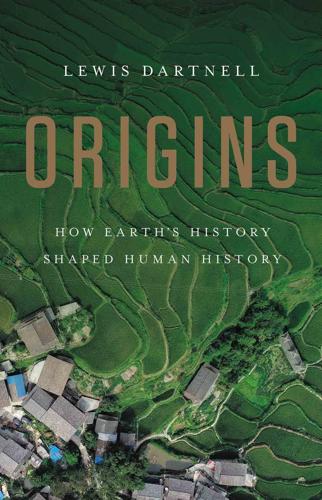
Origins: How Earth's History Shaped Human History
by
Lewis Dartnell
Published 13 May 2019
Ultimately, the fall of Rome was due to the ecological distinction between the arid grasslands of the Eurasian steppes that sustain horse-riding pastoral nomads and the wetter lands around the rim that supported the settled agriculture of the empire, and a climate shift within the steppes that triggered these waves of displaced peoples. PAX MONGOLICA In the thirteenth century, horse people from the steppes again changed the course of history across Eurasia. The Mongols emerged from the grasslands and in just twenty-five years they succeeded in conquering more territory than Rome had annexed in four centuries.68 The Mongol Empire not only united the tribes of the vast Eurasian steppe, but also included China, Russia and much of South West Asia, making it the largest land empire the world has ever known.69 The leader who instigated this spectacular campaign was the son of a prominent tribal chief in eastern Mongolia, born with the name Temüjin (perhaps meaning blacksmith).
…
Once resistance had been subdued, captured towns and cities were often rebuilt under the Mongols’ careful stewardship.83 The khans were also remarkably tolerant of the different peoples they ruled over, permitting cultural and religious freedom.84 After the initial campaign of shock and awe, the Mongols were able to win over hearts and minds. Moreover, when the initial fury and violence of conquest had passed, the unification of Asia produced an era of booming trade across the breadth of the continent. This has come to be known as the ‘Pax Mongolica’–echoing the Pax Romana, the period of stability and prosperity around the Mediterranean during the Roman Empire a millennium earlier. For around a century from 1260, the Mongol khanates ensured the secure passage of merchants across Asia, and their skills in administration and savviness in keeping taxes low all combined to foster commerce.85 In contrast to the smash-and-grab tactics of earlier nomad invaders who relied on plundered loot or tributes extorted from the agrarian civilisations, the khans appreciated that they could profit far more from trading than from raiding.
…
Commerce along the Silk Road flourished during this period, the caravans not only striding along the old desert routes of Central Asia but also turning further north to the Mongolian capital Karakorum and across the grassy steppes.86 The Mongols had accomplished the linking of east and west like no one before. As a result, spices and other luxury goods poured into Europe.87 The blast furnace arrived in the west during the Pax Mongolica, and the Mongols also introduced Chinese gunpowder to Europeans,88 changing for ever the nature of warfare. But the unification of Asia and the ease of movement across the continent had another profound ramification for history. Something else far more destructive also entered the bloodstream flowing along the communication arteries across Eurasia: disease.

Shadow of the Silk Road
by
Colin Thubron
Published 1 Jan 2006
The Mongols’ havoc had died away, and from the Great Khanate of a conquered China their dynasties ruled unbroken to the Mediterranean. From the mid-thirteenth century, for close on a hundred years, trade flowed along routes overseen by forts and the posting-stations of imperial couriers. It was said that a virgin bearing a gold dish could walk unmolested from China to Turkey. Under this Pax Mongolica, the popes and kings of Europe sent monks as emissaries eastward, seeking alliance with the Mongols against the Arabs, and hunting for the elusive Christian realm of Prester John. A Turkic Nestorian monk from China turned up in the Vatican and the court of Philippe le Bel in Paris, and the Polo brothers travelled to the capital of Kublai Khan with a gift of oil from the Holy Sepulchre.
…
Buddhism wanes c. 1260–1294 Kublai Khan emperor 1260–1295 Marco Polo’s supposed journeys 1279–1368 Yuan dynasty 1368–1644 Ming dynasty Mid 15th c The Ming close their borders 1644–1912 Qing dynasty 1949 People’s Republic founded 1959 Flight of the Dalai Lama 1966 Cultural Revolution starts 1976 Mao Zedong dies 1989 Tiananmen Square massacre 1990–98 Uighur uprisings against Chinese Central Asia 751 Battle of Talas. Arabs defeat the Chinese c 840 The Uighur migrate west to the Tarim 1220–7 Mongols invade under Genghis Khan 1260–1368 The ‘Pax Mongolica’ c. 1300 The Kyrgyz migrate from Siberia into the Tian Shan 1381 Tamerlane invades Afghanistan 1405 Tamerlane dies 1405–1530 Timurids rule at Herat 1500 Uzbek Shaybanids seize Samarkand 1504 Kabul captured by Babur 1747 Foundation of Afghan state 1885 Russians complete the conquest of Central Asia 1917 Soviet power established in Kyrgyz territory 1920 Bolsheviks seize Bukhara; Uzbek and Tajik refugees flee to Afghanistan 1924–7 Stalin defines the borders of Uzbekistan, Kyrgyzstan 1979–80 USSR invades Afghanistan 1989 USSR retreats from Afghanistan 1991 The Central Asian states gain independence from USSR 1994 Rise of the Taliban 1997 Taliban seize Mazar-e-Sharif, then are massacred 2001 US-led invasion of Afghanistan 2004 First free Afghan elections Iran 765 Birth of the Ismaili sect 874 Occultation of the 12th Shia Imam 1020 Death of Firdausi 1037–1220 Seljuk Turkish dynasty 1256–7 Mongols under Hulagu extirpate the Assassins 1256–1335 Ilkhanid Mongol dynasty 1258 The Mongols sack Baghdad 1304–1316 Reign of Oljeitu 1500–1736 Safavid dynasty 1925–1979 Pahlevi dynasty 1979 Islamic revolution under Ayatollah Khomeini.
…
Lhasa Li Bai Li Peng Lijian Linxia Living Buddha of Labrang Living Buddha of Tianshui Lop desert Lou Guan Tai Louis, St, King of France Lucan Macartney, George Magi Mahdi see Twelfth Imam/the Mahdi Mahmoud (builder) Mahmoud of Gazni, sultan Mahmud Kashgari, tomb of Mahmuda (Uzbek woman) Maitreya (Buddha of the Future) Maimana Maimundiz Malekshah, sultan Mamelukes Manas (Kyrgyz national hero) Manas air base Manchus Mangnai Manicheism Mansur (student) Mao Zedong Maracanda Maragheh Mardin Margilan Masihi, Artur (church caretaker) Massoud, Ahmed Shah Matisi temples Matthew, St Mazar-e-Sharif Mazinan Mecca Médecins Sans Frontières Medina Mediterranean Merv Meshed Mesopotamia Mevlevi sect Mexme, St Miandasht Mianeh Ming dynasty Mingzhao (daughter of Hu Ji) Mir-i-Arab, Bukhara Mir Sayyid Ali miscegenation Mobin (driver) Moguls Mohammad Jahi Mombasa Mongolia Inner Mongols Moscow Mouli (teacher) Mount Demavend Mount Qiao Mount Sipylus Muhammad, Prophet Mujahidin-e Khalq murals, Chinese Buddhist Sogdian Muslims see Islam/Muslims Namangan Namangani (guerrilla chief) Naqshbandi sect Naryn Naryn river Nasir ad-din Tusi National Minority People’s University (Lanzhou) nationalism and identity NATO assistance force Navoi Navoi, Alisher Nazira (caretaker) Nepal Nestorians Nestorius, patriarch of Constantinople Nishapur Niya Nizam al-Mulk Northern Alliance Nurana (Kyrgyz girl) Nuwa (goddess) Oljeitu, sultan mausoleum of Omar, caliph Omar, Mullah Omar Khayyám Rubáiyát grave of One Child policy Orontes river Orumiyeh (town) Orumiyeh lake Osh Osman (taxi-driver) Ostrovsky, Nikolai Oxus river see Amu Darya/Oxus river Pahlavi shahs Pakistan Pakistanis Palestine Palmyra Pamir mountains Panchen Lama paper Paris Paropamisus mountains Parthia Parthians Pasargadae Pashtuns Pass to the West Paul, St Pax Mongolica Persia Persian Gulf Persians Peter (Sinologist’s agent) Peter, St Petrovsky, Nikolai Philip of Montfort Philippe le Bel pilgrimage Piyada, Hajji Place of Drumbeats Pliny Polo, Marco Polo brothers Pompey Portuguese, the Prester John printing Production and Construction Corps, Xinjiang Pure Land of the Amithaba Qadamgah al Qaeda Qajar Qala-i-Jangi Qazvin Qezelabad Qianlong, emperor Qiao, Mount Qilian mountains Qin dynasty Qin Shi Huangdi, emperor terracotta army tomb Qing dynasty Qinghai Qinling mountains Qizil Uzun, gorge of Queen Mother of the West Qum Qumrabat Padshahim Qusam ibn Abbas Rabia Balkh Rawak Raymond of Tripoli Red Guards Revolutionary Guard Rey Richthofen, Friedrich von Romans Rome Roxana (wife of Alexander the Great) Rukn-ad-din Rushdie, Salman Ruslan (Kyrgyz) Russia Russian Orthodox Church Samarkand Russians Rustam (hero) Safavid, dynasty Saladin, sultan Samarkand Sanjar, sultan Sanliurfa Sarnath SARS Sassanian dynasty Saudi Arabia Seleucia Pierea Seleucus I Seljuks Seneca Seres Serica Shaanxi museum Shaanxi province Shah Rud valley Shah Rukh Shah-i-zinda (grave of Qusam ibn Abbas), Samarkand Shahi Shahnama Shalamov, Varlam Shams Kilaya Shandong Shaybanid dynasty Shebergan Shen Congwen Shirin river Shutur Khan Siberia Sichuan silk in Buddhism discovery dissemination in Islam among the Mongols manufacture in Persia qualities Roman view of origins secret betrayal subverting Roman economy superfine uses Silk House constellation Silk Road Antioch at western end of Changan at eastern end of decline of humbler traffic interconnectedness letters travelling along lingua franca of spread of inventions along spread of musical instruments along trade along Sipylus, Mount Sirnak Sogdians Song-kul lake South China Sea Soviet Union/USSR Spain Sri Lanka Stalin, Joseph Stark, Freya Stein, Aurel stirrups Sufis see also Mevlevi, Naqshbandi Sui dynasty Sultaniya Sun Yatsen Sung dynasty Sunni Sussmayr massif Suzhou Syr Darya (ancient Jaxartes) river Syria Syrians Tabriz Tahir (BBC worker) Taizong, emperor Tajikistan Tajiks Takht-i-Pul Taklamakan desert Talas battle of (AD 751) Talas river Talas valley Taliban Tamerlane the Great tomb Tang dynasty and Changan Tangshan Tanintanin mountains Tao Te Ching Taoism Tarim basin Tartars Tash Rabat Tashkent Taurus mountains Tazhong Tehran Termez terracotta army Tethys Sea Tian Shan mountains Tiananmen Square, Beijing massacre Tianshui Living Buddha of Tibet Tigris river Timurids Titus, emperor Tocharians Tochtor (Kyrgyz) Toktogul lake reservoir Torugart pass Turcomans Turkestan Turkey journey in Turkic peoples ‘Turkish Islamic Republic of East Turkestan’ Turkmen desert Turkmenistan Turks Tus Tusi, Nasir ad-din Twelfth Imam/the Mahdi Uighurs Ukrainians Ulug Beg, prince Unai Enye (goddess) United Nations (UN) Assistance Mission, Mazar-e- Sharif United States of America Urumqi University Ushmurvan river Ustkurgan Uzbekistan journey in Uzbeks Vahid (Iranian emigrant) Vakhuman, king of Samarkand Vatican ‘Vegetable Lamb’ Vespasian, emperor Virgin Mary Visigoths Wahabis/Wahabism Wang, Abbot Wang Zhonghu Warner, Langdon Wei valley Wei river West, the time line Western Market, Changan Western music White Jade river, Khotan World Trade Center Wudi, emperor Xian Xinjiang Xuanzang, monk Xuanzong, emperor Yacub Beg Yalda Yangtze river Yarkand Yellow Emperor grave-mound of Yellow Hat sect Yellow River Yenisei river Ying (Luo Ying) Yongchang Youshashan Yu (professor) Yuan dynasty Zahir Shah, king Zanjan Zelim (Zelim Khan) (artist) Zerafshan river Zhangye Zhelaizhai Zhukov, Marshal Zoroaster Zoroastrianism About the Author COLIN THUBRON is an acknowledged master of travel writing.
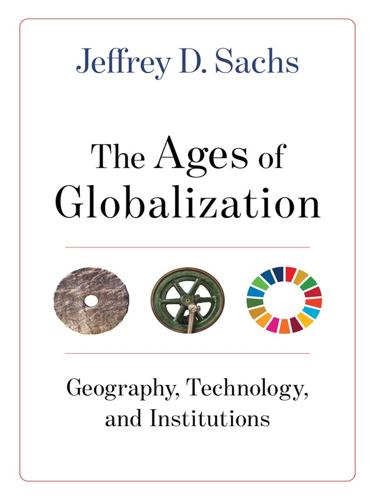
The Ages of Globalization
by
Jeffrey D. Sachs
Published 2 Jun 2020
A postal system united the vast empire, with riders covering up to two hundred kilometers per day. 5.11 The Mongol Empire at its Maximum Extent, 1259 CE The conquests were extraordinarily bloody, with millions killed. It was also by way of the Mongolian trading network that the Black Death reached Sicily from the Black Sea in 1347, eventually killing up to a quarter of the European population. Yet the Pax Mongolica that extended over the vast part of Eurasia also ushered in a massive expansion of east-west trade that connected Western Europe and East Asia. Merchants were protected, and trade flourished. It was on the Mongol Silk Road that Marco Polo took his famed journey to Khanbaliq (today’s Beijing), Kublai Khan’s capital in China.
…
See New International Economic Order Nine Years’ War (1688–97), 122 nomadic populations, 43–45, 60 North America: Eurasia compared to, 63; European colonists settling, 22; European sea routes linking, 125–26; geographical bounties of, 21–22; horse extinction in, 56; horses in, 101; King William’s War in, 122; land use in, 103; population of, 102, 103; slave plantations of, 119; technologies cut off from, 51–52 North Atlantic, 98–101 Novum Organum (Bacon, F.), 106 Noyce, Robert, 171 nuclear powers, 30 ocean acidification, 188 Ocean Age, 2, 4, 7, 195; global reach in, 11; lessons from, 126–27 ocean navigation, 97–101 ocean shipping, 134 Ogedei Khan, 91 oil reserves, 18 Old World, 100–101, 228n10 Old World technologies, 21 Opium War, 146–47 organic economy, 133 Ottoman Empire, 89, 111, 158 Our Common Future (report), 197 overland transport, 25 oxen, 47 ozone depletion, 188 pack animals, 56 packet switching, 171 Paleolithic Age, 2–3, 7, 195; dog domestication in, 54–55; human dispersal during, 35; hunter/gatherers in, 15–16; lessons from, 40; Middle Paleolithic of, 34; migration and human settlement in, 10–11; productive activity in, 15; sub-periods of, 226n1 papermaking, 82 Paris Climate Agreement, 232n4 Parthasarathi, Prasannan, 149 Parthian Empire, 82–83 Partial Nuclear Test Ban Treaty (1963), 213 Patent Cooperation Treaty (PCT), 182 patents, 182 pathogens, 101, 101–2 Paul III (pope), 106 Pax Mongolica, 92 PCT. See Patent Cooperation Treaty Pearl Harbor, 159 Pederson, Neil, 91 Peloponnesian Wars, 75 Peloponnesian Wars (Thucydides), 75 People’s Republic of China, 147 per capita GDP: in Britain and Holland, 141; of China, 180; of countries, 142; of developing countries, 178, 179 permanent settlements, 41 Persia, 74, 76, 83 Persian-Greek Wars, 75 petroleum, 145 Philip of Macedon, 75 philosophers, Islamic, 78 philosophy, 70 Phoenicians, 72–73 physical geography, 1, 19 plague (yersinia pestis), 45 planetary boundaries, 187–92, 189, 197 plantations, 117 Plato, 69–70, 73, 75 Pleistocene age, 57 polar regions, 22 politics, 4, 69 Pope, Alexander, 136 population: agriculture and, 135; CIS, EU and Asia density of, 113; in Classical Age, 11; climate zones distribution of, 83–84, 84; of countries, 209, 209–10; data on, 219–20; of Eurasia, 44; Eurasian climate zones, 24–25, 25; of Europe, 27; of Han Empire, 82–83; of Japan, 150; land use and, 222–23; lucky latitudes and world, 83; nomadic, 43–45, 60; of North America, 102, 103; river areas density of, 26; of Roman Empire, 82–83; urbanization and, 130; world, 8, 10, 83, 135 Portugal, 97–98; Cape Verde islands colonized by, 108; discovered lands divided with, 109; global empires of, 110, 110–11 potatoes, 42 PPP.
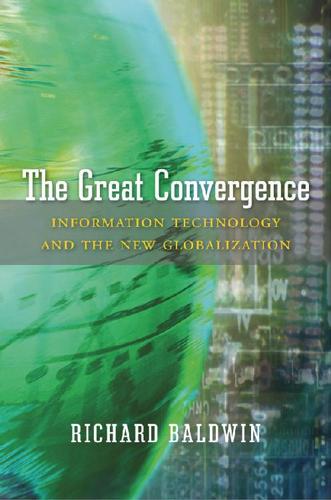
The Great Convergence: Information Technology and the New Globalization
by
Richard Baldwin
Published 14 Nov 2016
Two particularly notable political reorganizations came with the Golden Age of Islam and the rise of the Mongolian Empire. The Mongolian Empire, which still holds the record for the largest land empire, brought the entire overland Silk Road under a single authority for about 160 years, starting from 1200 CE or so. The period is known as Pax Mongolica. The spread of Islam from the seventh to thirteenth centuries advanced trade by integrating much of the southern, sea-based part of the Silk Road. This reduced trade costs over territory that stretched from Southeast Asia to southern Spain. There is abundant evidence that Silk Road trade had important effects on certain cities and on the elite in most nations.
…
Each voyage brought less than a thousand tons of cargo to Europe. During the entire seventeenth century, only 3,000 European ships sailed to Asia. The number was little more than twice that for the whole of the eighteenth century.5 Stage 3: The Rise of Europe, 1350 to 1820 The boost in trade that Pax Mongolica enabled had the unintended effect of globalizing the bubonic plague. While the disease had caused havoc several times in history, the waves of epidemics from 1350 onward were truly transformative. Moving East to West along the Silk Road, the Black Death arrived in Europe in 1347. The disease wiped out between a quarter and half of all Europeans in just three years.
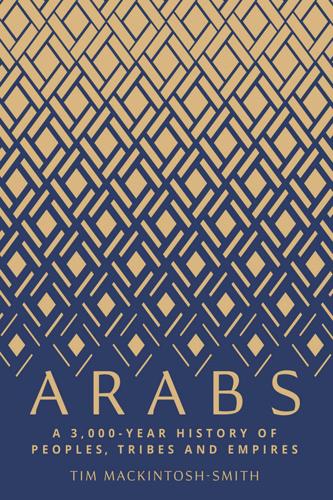
Arabs: A 3,000 Year History of Peoples, Tribes and Empires
by
Tim Mackintosh-Smith
Published 2 Mar 2019
Thus the hordes of Chingiz and Hulagu added a further barrier between the Arabic and Persian parts of the Islamic world: the Saljuqs had drawn a linguistic curtain across the south-western entrance to Asia; the Mongols turned it into a shutter, and Arabic was further diminished as the paramount language of the Islamic world. Yet, at the same time, they opened a door. Having digested their victories, they settled down to the business of ruling in relative peace, and presided over the so-called Pax Mongolica. For the first time since the brief height of the Arab empire in the Abbasid ninth century, truly trans-hemispheric trade and travel were up and running once more . . . and then, just when you thought it was safe to take to the Silk Road again, the Black Death struck. The first onslaught of plague in the 1340s and 1350s killed perhaps a third of humanity in a swathe across Eurasia and North Africa, and it did so at least partly because of the mobility which the newly unrolling land- and sea-roads offered microbes as well as mankind.
…
Individuals took advantage of the new hemiglobal currents; so did trading corporations, most lucratively that of the Karim, based in Egypt and the Levant. The meaning of their name is unclear: they were Muslim, but their origins may have been eclectic; they are often glossed as ‘spice merchants’, but their interests were much wider. They had already existed for several centuries; now they too were revived by the Pax Mongolica, and they set about realizing Sa’di’s merchant’s dream and more, operating a hemispheric trade network that stretched from the Atlantic to the Pacific the long way round. Sometimes, as in the early history of the Arab empire and in the coming history of European empires, the flag followed trade.
…
Ziyad leads mainly Berber forces into Spain 715 the Umayyad Mosque of Damascus is completed by c. 720 construction of N Arab lines of descent from Isma’il construction of S Arab lines of descent from Qahtan all Arabs now united in theory by genetics, if not by politics 732 Arab-led forces clash with Carolingian force near Poitiers 747 Abbasid revolution launched in Khurasan (E Persia) fellow revolutionaries include supporters of the shi’ah of Ali 750 Abbasid forces defeat and exterminate Umayyads al-Saffah becomes first Abbasid caliph Abbasids start eliminating fellow revolutionaries 751 Arab-led forces clash with Chinese, E of the Syr Darya River 754 al-Mansur succeeds al-Saffah as Abbasid caliph mid-8th century on paper-making spreads through the Arabic world written Arabic proliferates because of the cheapness of paper smoothness of paper promotes further improvements to script Islamic legal and moral systems begin to be synthesized 756 an Umayyad survivor, Abd al-Rahman, founds Spanish dynasty Arab migration to Spain increases 762 al-Mansur founds Baghdad 762 on al-Mansur eliminates opposition within Abbasid family he eliminates potential opposition from Abbasid revolutionary elite he begins a trend by relying on non-Arab slaves as soldiers 774 King Offa of Mercia, England, imitates Abbasid coinage 788 a descendant of Ali founds the Idrisid dynasty in Morocco late 8th century on beginning of ‘the age of setting down’ during this age, Arab cultural legacy and identity are enshrined for posterity a ‘bedouin’ past is promoted (actual bedouins are now marginal) Persians, then many others, resuscitate their own cultures their ‘Shu’ubi’ movements challenge Arab cultural hegemony 809 death of Caliph al-Rashid the empire is divided between three of al-Rashid’s sons two of the sons, al-Ma’mun and al-Amin, fight each other 813 on al-Ma’mun is victorious, establishes rule over all the empire al-Ma’mun imports Transoxanian troops into Baghdad early 9th century intellectual openness under the caliph al-Ma’mun the Mu’tazilah promote theological debate written Arabic prose at last becomes a medium of expression 816 al-Ma’mun designates the Shi’i imam al-Rida as his heir 818 al-Rida dies; reconciliation with the Shi’ah is shelved 832 al-Ma’mun founds the House of Wisdom 833 al-Mu’tasim becomes caliph, imports Turkish and other troops the troops cause havoc in Baghdad 836 al-Mu’tasim moves non-Arab troops to a new capital, Samarra’ 9th century al-Baladhuri records Arab conquests al-Jahiz analyses arabness, rebuffs the Shu’ubis islamization accelerates, belatedly, across the empire ‘being Arab’ now matters less: the empire is cosmopolitan Byzantines and Chinese imitate Arab clothing fashions Spanish Christians become completely arabicized mid 9th century under Caliph al-Mutawakkil, theological speculation is banned 861 al-Mutawakkil killed in plot by son and Turkish guards real power in hands of Turkic military commanders 868 Persian Saffarid dynasty independent of Baghdad in the E Egypt breaks away from Baghdad under C Asian Tulunids 869–83 rebellion in Iraq of the Zanj (plantation slaves from E Africa) 890 on rebellion in Iraq and beyond of peasants under Hamdan Qarmat the rebellion allies itself to the Isma’ilis, a Shi’i splinter-group late 9th century Samarra’ abandoned early 10th century from now, political power of Baghdad caliphate only covers Iraq 10th century the Arab empire fragments irreparably but in the C and the W culture is still Arabic, patrons proliferate multi-volume anthologies and histories enshrine Arab heritage Arab Hamdanid dynasty prominent in N Iraq and N Syria 910 Fatimid dynasty (of dubiously Arab origin) established in N Africa Fatimids adopt the title ‘caliph’ 922 execution of the nonconformist visionary al-Hallaj 929 Abd al-Rahman III (Spanish Umayyad) claims the title ‘caliph’ 930 Qarmati rebels raid Mecca and remove the sacred Black Stone 938 Bajkam, Turkish generalissimo, effective ruler in Baghdad 940 death of al-Radi, ‘the last real caliph’ (even if powerless) now there are three rival titular caliphates: Baghdad, Cairo, Cordova the idea of Arab unity is at a low, 300 years after its high point 945 Iranian Buwayhids take power in Baghdad mid 10th century Cordova now a great centre of Arabic culture 966–8 the eunuch slave Kafur holds power in Egypt 968 Fatimids enter Egypt 969 Cairo founded as new Fatimid capital c. 970 Turkic Saljuqs begin takeover of caliphal territory later 10th century the Qarmati-Isma’ili ‘intellectual wing’ synthesizes scientific lore 1031 the Umayyad caliphate in Spain fragments the ‘Party Kings’ rule numerous small Iberian states 1055 Saljuqs take Baghdad mid-11th century Banu Hilal and other big Arab tribes are moved W from Egypt belated arabization of rural N Africa 1061 on Normans take over Arab-ruled Sicily later 11th century Saljuqs control the entire E wing of the old Arab empire Saljuqs have adopted Persian as their cultural language Saljuq Vizier Nizam al-Mulk encourages madrasahs and Arabic studies 1085 Christian Spanish retake Toledo Christian Spanish maintain traditions of Arabic learning 1086 on Berber Almoravids stop Christian advance and take over S Spain Almoravids claim Arabian ancestry 1099 Crusaders take Jerusalem, massacre inhabitants 1130s court of Roger II, Norman king of Sicily, largely Arabic in culture 12th century the Crusades channel Arabic words and ideas to Europe Arabic learning spreads into Europe via Sicily and S Italy mid-12th century Berber Almohad alliance takes over S Spain Almohad leader is first avowed non-Arab to adopt the title ‘caliph’ Almohads embrace urban Arabic culture 1169 Kurdish Ayyubids established in Cairo 1171 Ayyubid Salah al-Din (Saladin) abolishes Fatimate caliphate Saladin re-establishes nominal suzerainty of Abbasid caliphs 1219 Crusaders take Damietta (Egypt) Mongols appear in Islamic lands Mongols perpetrate urban massacres, cause rural devastation 13th century Ibn Khallikan’s biographical dictionary, Notable Deaths 1248 Christian Spanish retake Seville 1250 Turkic Mamluk slave-soldiers take over in Egypt and Syria 1258 Mongols under Hulagu take Baghdad, kill Caliph al-Musta’sim any last pretense of Arab unity ends social breakdown: tribal Arabs raid settled lands Mamluks host Abbasid puppet caliphate in Egypt 1260 Mamluks halt Mongol advance at Ayn Jalut (Palestine) late 13th century Arabs found sultanate of Kilwa Kisiwani (Tanzania) W Mongols adopt Islam and Persian culture most Crusaders have left the Levant early 14th century Arab tribes switch loyalties from Mamluks to Mongols and back 14th century Pax Mongolica: hemiglobal trade and travel flourish Egypt-based Karim merchants active from Atlantic to Pacific Arabic culture and Islam spread between W Africa and E Indies Arabic script used for many languages, Africa to Asia start of 250-year diaspora of Arabs around Indian Ocean rim Moroccan Ibn Battutah travels in three continents Cairo is the biggest city outside China and the capital of Arabic culture Arabic culture also flourishes in Granada, Spain 1343 Sultanate of Delhi a nominal vassal to Abbasid puppet caliph 1340s on plague destroys a third of humanity from China to Europe 1375–9 Ibn Khaldun works on his History c. 1400 Mongol leader Timur Lang (Tamerlane) devastates Levant etc. 15th century Arab al-Ma’qil tribe begin to penetrate Mauritania belated arabization from this last major migration 1453 Ottoman Turks take Constantinople 1485 Ottomans ban printing in Arabic 1488 Portuguese round the Cape of Good Hope start of European attempts to monopolize Indian Ocean trade 1492 Granada falls to Christian forces from Castile 1516 Ottomans take Damascus 1517 Ottomans take Cairo and its dependencies, Medina and Mecca Ottomans remove Abbasid puppet caliph to Constantinople 1519 Algiers submits to Ottoman suzerainty 1520s Ottomans established in Yemen 1534 Ottomans take Baghdad 16th century on much of Arabic world Ottoman-ruled for most of the next 300 years Arabs are united politically, but at the cost of their independence any sense of widely-shared Arab identity enters a trough 1543 last Abbasid puppet caliph dies in time, Ottoman sultans assume the title ‘caliph’ early 17th century Lebanese Christian Arabs experiment with Arabic printing the experiment does not spread 1630s on opposition to Ottoman rule in Yemen Ottomans withdraw from Yemen 1662–84 English control Tangier (Morocco) late 17th century Omanis expand naval power, found E African coastal empire c. 1720 birth of Muhammad b.
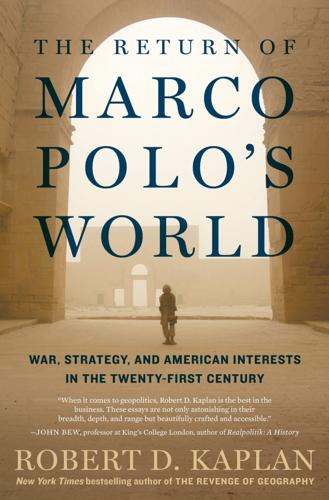
The Return of Marco Polo's World: War, Strategy, and American Interests in the Twenty-First Century
by
Robert D. Kaplan
Published 6 Mar 2018
The Mongols, whose Yuan Dynasty ruled China in the thirteenth and fourteenth centuries, were, in fact, “early practitioners of globalization,” seeking to connect the whole of habitable Eurasia in a truly multicultural empire. And Yuan China’s most compelling weapon was—despite the Mongols’ bloody reputation—not the sword but trade: gems, fabrics, spices, metals, and so on. It was trade routes, not the projection of military power, that emblemized the “Pax Mongolica.”*9 Mongol grand strategy was built on commerce much more than on war. If you want to understand China’s grand strategy today, look no further than Kublai Khan’s empire. Yet, for Kublai Khan it didn’t altogether work. Persia and Russia were beyond Chinese control, and the Indian subcontinent, separated from China by the high wall of the Himalayas, with seas on both sides, remained its own geopolitical island.
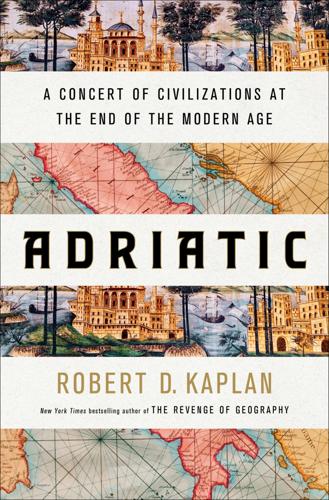
Adriatic: A Concert of Civilizations at the End of the Modern Age
by
Robert D. Kaplan
Published 11 Apr 2022
The Mongols, whose Yuan Dynasty ruled China in the thirteenth and fourteenth centuries, were “early practitioners of globalization,” seeking to connect the whole of habitable Eurasia in a truly multicultural empire. And Yuan China’s most compelling weapon was (despite the Mongols’ bloody reputation) not the sword but trade: gems, fabrics, spices, metals, and so on. It was trade routes, not the projection of military power, that emblemized the “Pax Mongolica.”[32] Mongol grand strategy was built on commerce much more than on war. If you want to understand China’s grand strategy today, I would think, look no further than Kublai Khan’s empire, of which the Venetian Marco Polo leaves such a unique record. Yet for Kublai Khan it didn’t altogether work.
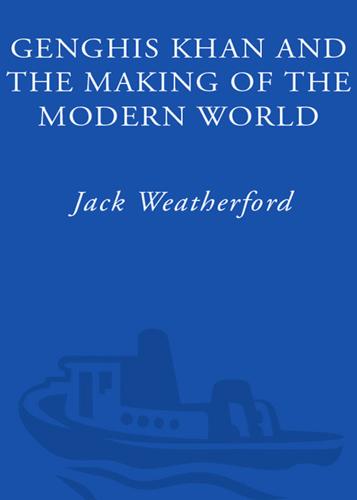
Genghis Khan and the Making of the Modern World
by
Jack Weatherford
Published 21 Mar 2005
Instead of sending mounted warriors and fearsome siege engines, the Mongols now dispatched humble priests, scholars, and ambassadors. The time of Mongol conquests had ended, but the era of the Mongol Peace was only beginning. In recognition of the phenomenal changes of expanding peace and prosperity on the international scene, Western scholars later designated the fourteenth century as the Pax Mongolica or Pax Tatarica. The Mongol Khans now sought to bring about through peaceful commerce and diplomacy the commercial and diplomatic connections that they had not been able to create through force of arms. The Mongols continued, by a different means, to pursue their compulsive goal of uniting all people under the Eternal Blue Sky.

Open: The Story of Human Progress
by
Johan Norberg
Published 14 Sep 2020
Once the Mongols saw that openness had made the country phenomenally rich, they abandoned the idea of depopulating China’s agricultural land and using it as grazing ground for the horses. Instead, Kublai Khan’s new China preserved Song’s scientific and technological legacy and combined it with new methods and expertise that Mongols picked up in the rest of Eurasia, now once again reconnected through the Silk Road. International trade expanded under a Pax Mongolica. Kublai Khan recruited Uighurs, Persians, Central Asians and Europeans as governors and ministers. Arab and Greek scientists produced advanced maps and astronomical tables. Merchants, artisans and workers from all over the world and from all religions thronged the streets. Muslim doctors understood surgery, but the Chinese had better knowledge of internal organs, so together they could make greater advances.

The Rational Optimist: How Prosperity Evolves
by
Matt Ridley
Published 17 May 2010
In Eastern Europe, Mamluk Egypt and Ming China, serfdom was effectively restored. Empires, indeed governments generally, tend to be good things at first and bad things the longer they last. First they improve society’s ability to flourish by providing central services and removing impediments to trade and specialisation; thus, even Genghis Khan’s Pax Mongolica lubricated Asia’s overland trade by exterminating brigands along the Silk Road, thus lowering the cost of oriental goods in European parlours. But then, as Peter Turchin argues following the lead of the medieval geographer Ibn Khaldun, governments gradually employ more and more ambitious elites who capture a greater and greater share of the society’s income by interfering more and more in people’s lives as they give themselves more and more rules to enforce, until they kill the goose that lays the golden eggs.
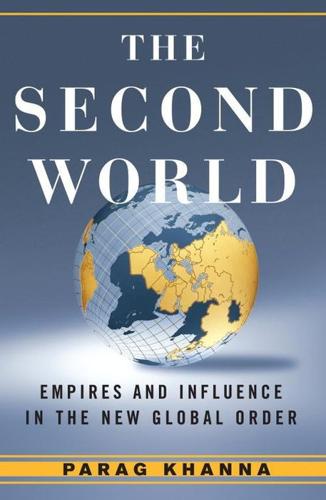
Second World: Empires and Influence in the New Global Order
by
Parag Khanna
Published 4 Mar 2008
Bukhara became the eastern pillar of Islam, with thousands of students streaming into its colorful madrasahs to absorb the Samanid amirs’ poetic teachings. The continuous imperial turnover in Central Asia demonstrates that it is not only power that abhors a vacuum but also space itself. “I am God’s punishment for your sins,” Genghis Khan viciously admonished the Seljuk Turks as his Mongol hordes sacked Bukhara in 1221. The Pax Mongolica “made the empires of Rome and Alexander seem insignificant,” wrote B. H. Liddell Hart, and its management of the Silk Road graciously facilitated Marco Polo’s fabled voyages.2 After the plague wiped out much of the region’s population in the fourteenth century, Amir Timur (Tamerlane) claimed lands from Kashgar to the Caucasus, and his grandson Babur established the Mughal dynasty in India.

China: A History
by
John Keay
Published 5 Oct 2009
Khubilai emerged as the Great Khan with direct control of the Mongolian homeland, northern China, Manchuria and Korea, plus nominal authority over the entire empire as successor to Chinggis; but his khanate was just one of four, all vast Eurasian powers that now acted more like fraternal states than constituent parts of a single empire. The so-called pax Mongolica was deceptive. Travellers with information to share, merchandise to sell or expertise for hire passed freely through the Mongol lands; in what would prove to be the swansong of the Silk Road, east and west engaged in a fruitful exchange of technologies and ideas as well as luxury goods. But familial ties among the khanates were no longer sustained by a common purpose, and the overarching claims of the Great Khan provoked more dissension than collaboration.
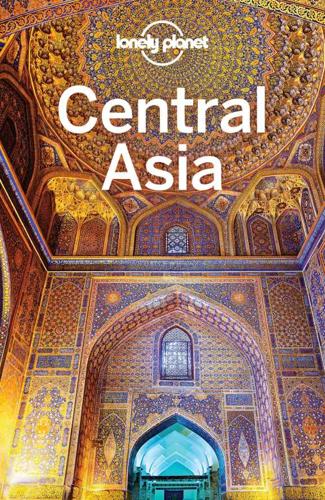
Lonely Planet Central Asia (Travel Guide)
by
Lonely Planet
,
Stephen Lioy
,
Anna Kaminski
,
Bradley Mayhew
and
Jenny Walker
Published 1 Jun 2018
Settled civilisation in Central Asia took a serious blow, from which it only began to recover 600 years later under Russian colonisation. Chinggis' descendants controlling Persia favoured Shiite Islam over Sunni Islam, a development which over the centuries isolated Central Asia even more from the currents of the rest of the Sunni Muslim world. But there was stability, law and order under the Pax Mongolica. In modern terms, the streets were safe and the trains ran on time. The resulting modest flurry of trade on the Silk Road was the background to several famous medieval travellers' journeys, including the most famous of them all, Marco Polo. The Great Horde roamed the steppes of the Zhetisu region (Russian: Semireche), north of the Tian Shan; the Middle Horde occupied the grasslands east of the Aral Sea; and the Little Horde took the lands to the west, as far as the Ural River.

Bourgeois Dignity: Why Economics Can't Explain the Modern World
by
Deirdre N. McCloskey
Published 15 Nov 2011
They were economically vital societies, with a full panoply in 1500 of the legal institutions that recent economists and political scientists such as North and Greif and Acemoglu and Robinson have put forward as explaining the modern world. Genghis Khan achieved supremacy precisely by enforcing the rule of law among the Mongols themselves, introducing, for example, fierce penalties for stealing animals (which were the productive capital of the steppe nomads) or women.1 The resulting Pax Mongolica of the thirteenth century imposed peaceful property rights on the largest contiguous land empire until then assembled, from Korea to Hungary. An Italian merchant in 1340 declared that the Central Asian routes under Mongol control were “perfectly safe, whether by day or by night.”2 But conquest and a royal state were nothing like necessary.